#the sanctuary basilica
Explore tagged Tumblr posts
Text

Ceremony entering the Sanctuary Basilica of the Assumption of Our Lady in Mosta, Malta
French vintage postcard
#basilica#carte postale#postkarte#the sanctuary basilica#historic#postcard#sepia#ansichtskarte#postkaart#assumption#tarjeta#mosta#ceremony#sanctuary#briefkaart#ephemera#photography#entering#lady#vintage#french#postal#photo#malta
4 notes
·
View notes
Text
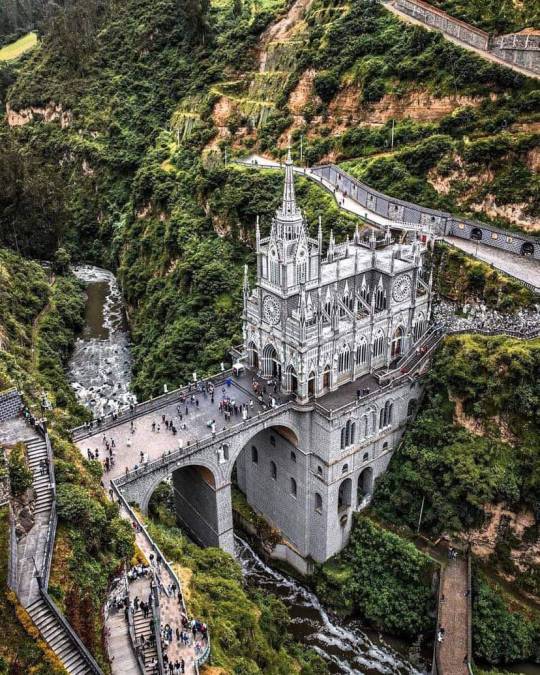
Santuario Nacional de la Basilica de Nuestra Señora de Las Lajas en COLOMBIA
#santuario#nuestra señora#our lady#shrine#basilica#las lajas#sanctuary#rio#guatara#river#ipiales#nariño#colombia#south america#sur america#america
265 notes
·
View notes
Text
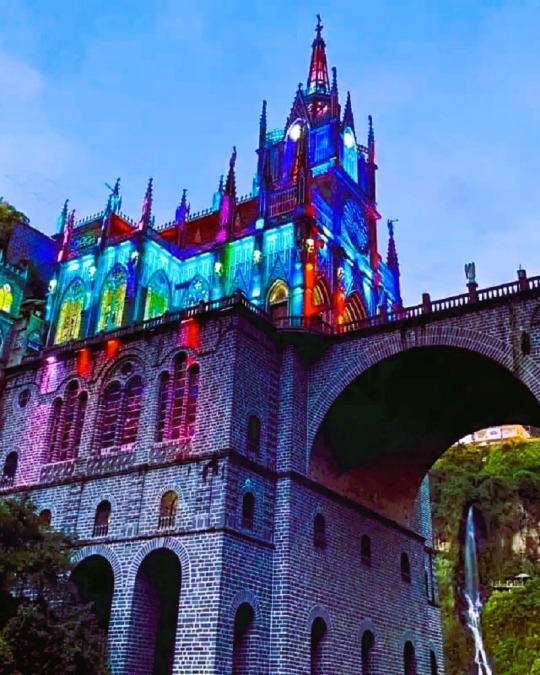
Sanctuary of Las Lajas, Minor Basilica, Colombia: The Sanctuary of Las Lajas is a Roman Catholic minor basilica located within the canyon of the Guáitara River, in Ipiales, Nariño Department, Colombia. The Marian shrine is dedicated to the Blessed Virgin Mary as Our Lady of the Rosary. Wikipedia
#Sanctuary of Las Lajas#Minor Basilica#Ipiales#Nariño Department#Colombia#south america#south american continent
102 notes
·
View notes
Text

Sanctuary Basilica of the Assumption of Our Lady (aka Rotunda of Mosta)
📍Mosta, Malta
#dark academia#light academia#classical#academia aesthetic#escapism#academia#books and libraries#classic literature#books#architecture#building#exterior#travel#place#photography#Sanctuary Basilica of the Assumption of Our Lady#Rotunda of Mosta#Mosta#Malta#old building#historical#old#history#royal core#cottage core#aesthetic#academic#mood#vibe#tumblr
31 notes
·
View notes
Text
Las Lajas Sanctuary
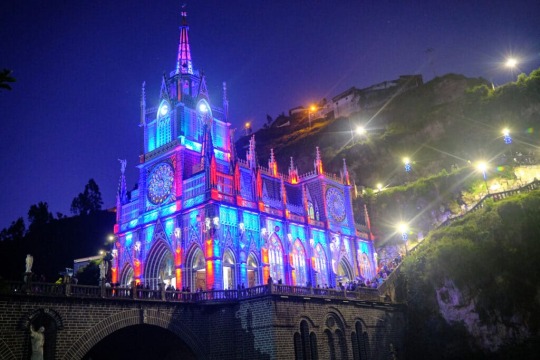
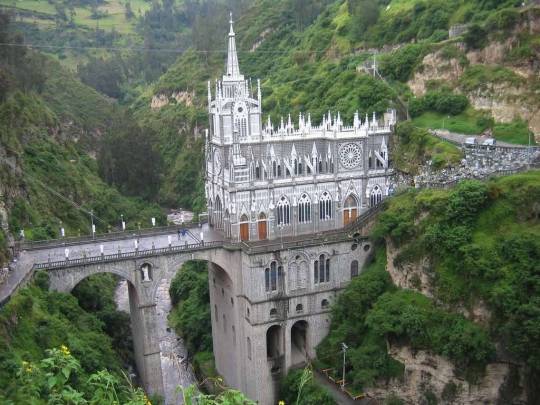
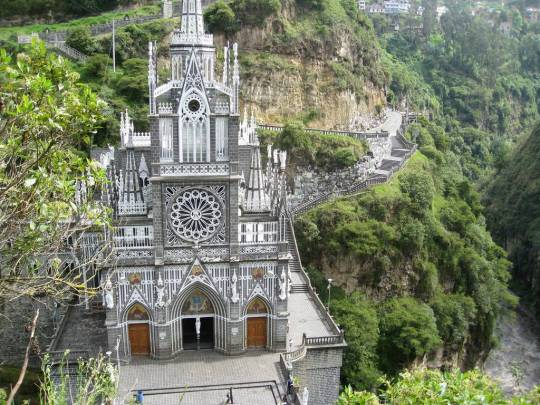

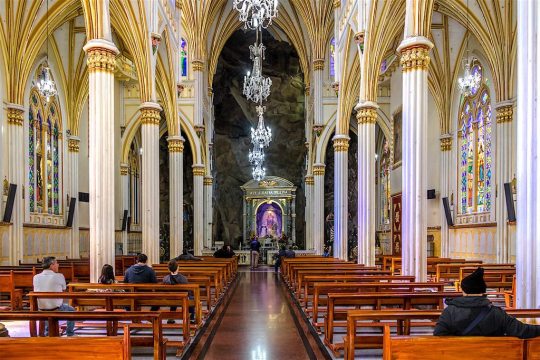
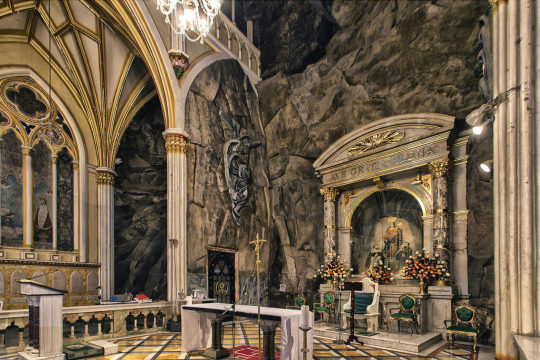
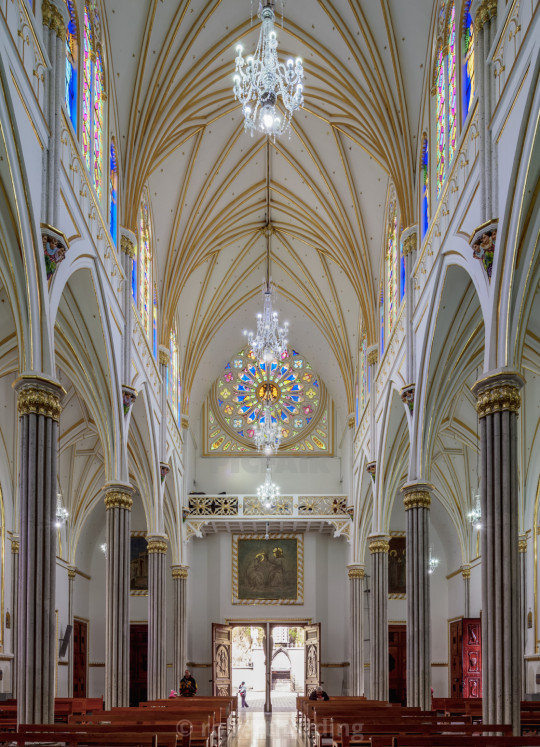
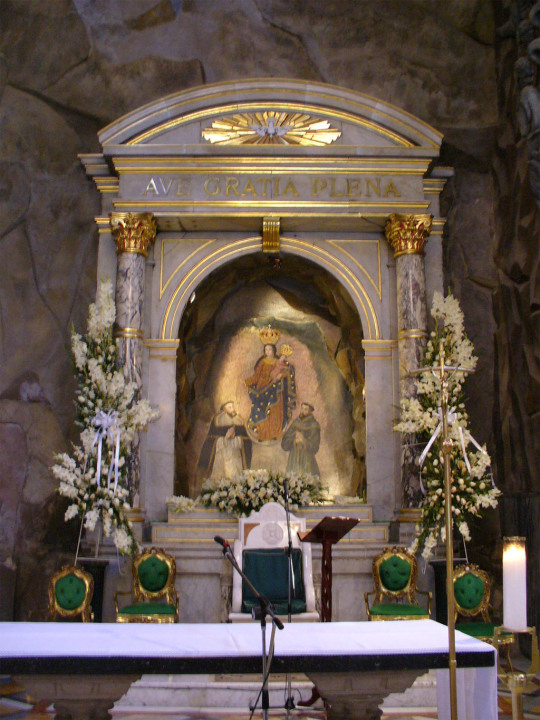
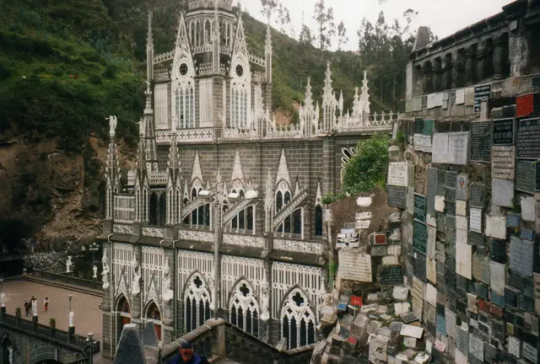

Las Lajas Sanctuary is located in Nariño, Colombia, near the city of Ipiales in South America. The Roman Catholic Basilica was built inside the canyon of the Guáitara River. The present church was built in the Gothic Revival style between 1916 and 1949. A miraculous event is said to have occurred at this site in 1754 when a mother and her deaf daughter were caught in a storm and sought refuge between the giant Lajas. The little girl spoke and claimed the lighted silhouette she saw over the Laja was the Virgin Mary. The miraculous healing story had others visiting the sanctuary for healing, as it became a pilgrimage site. The image of the Virgin Mary on the stone is still visible today, although no one knows who made the image, which sits at the end of the church behind the altar. The name Laja comes from a flat sedimentary rock similar to shale. The first shrine built on this site was created in the mid-18th century from straw and wood. It was replaced with a new, larger shrine in 1802. The current church stands 330 feet high from the bottom of the canyon and connects to the opposite side by a 160-foot tall bridge that sits over the Guáitara River. Las Lajas received canonical coronation from the Vatican in 1952 and became a minor basilica in 1994. Many healing miracles have been reported to occur at this church throughout its existence. Las Lajas Sanctuary is open to the public.
0 notes
Text


The Ladies of Addagala || Kofi | Commission Info | Threadless Shop|| Do not edit, trace, or repost!
So this started as another one-off bit that involved drawing the lords of Alagadda with inverted colors, but it grew into a whole realm with Lore. The finding of this place written below, pov of my sprite persona.
[ You would think I would have learned my lesson by now, considering how the blame fell on me for witnessing and then interfering with these kinds of entities. But, no. And so, with the knowing expectation that I will be held responsible for merely observing this, I wish to tell you what I saw while around the outer boundaries of ■■■ verse, ■■■ space-■■■ time, "SCP Wakey Wakey"’s reality. It would appear that, by accident, a secondary nexus evolved from my observations of Alagadda and its tributaries. An attempt by What Is and What Isn’t to balance out the chaos of the city-state: an antithesis. Such a place is a hefty feast to observe by oneself – hence my absence – so I took in what I could for now. More undoubtedly lingers beneath its glossy surface.]
The Land of Addagala – a name a little too on-the-nose in my opinion, but that's not important – was a citywide sanctuary locked within a snowglobe. The first notable sensation I recall being the chill in the air; I learned later that it became just warm enough in its spring and summer seasons to let the flowers bloom and produce fruit. A warmth that apparently came not from the grey sun, but that radiated out from their beloved monarch. The sun, which also acted as its moon, was more of a static decoration in the sky. No sunrise or sunset; the day faded into night into day into night again without it. The kingdom’s borders were high stone walls, beyond which was a mystery that even my kind could not perceive; it simply did not exist. Leaving through the gates led out to… Well, it led me out to Nowhere, but others presumably back their native reality (hopefully). Within said walls were sprawling, spiraling meadows, pastures, and gardens. Neat rows of simplistic homes and facilities leading up to its centerpiece: a modest basilica with a clock tower that stretched far higher than seemed necessary. Everything within this scenery had its similarly mandated colors – or only naturally occurring ones depending on the realm’s laws– of Silver, Indigo, Sapphire, and Turquoise.
After a general overview, I floated down and followed one of the branching stone paths in the garden. Blue roses and peonies lined in neat spirals, soft turquoise grasses, beautiful stone statues, bumbly honey bees buzzing about; I must’ve spent hours in the garden alone. The aforementioned clocktower would sweetly chime each hour before falling into a peaceful quiet again. I spied a few citizens there as I perused the flowers. Besides the silver masks (also mandatory here), they dressed in accordance with the cold weather: Long gowns, capes, and sleeves; furs, feathers, and fluff; soft, warm, and layered to keep the cold at bay. I learned later that those unfortunate few to enter without proper fittings would not stay cold long as the advising Ladies and their orderlies would happily provide suitable clothing. Their motives are well-intentioned, yet also motivated by an implied modesty dress code. Suppose I should have expected as much from the opposite Alagadda.
It was there within the gardens where I found the first lady of the city: Lady Turquoise, wearer of the Solemn mask. Dignified yet understanding. Her stature towered, imposing an air of respect. She was hard at work tending to the hedges; precise in every movement and measurement. A look within revealed more about her and the kingdom itself: This place had a rigid sense of time and a stern set of rules to keep order: both of which were expected to be followed by every citizen. And schedules needed to be planned, written, and updated by someone. The sense of such strict routines was somewhat nauseating – and I like routine, mind you. But now, in a moment of allowed leisure, she tended to her gardens. I would’ve lingered longer to watch her work, but the hint of desperate perfectionism within warded me off. I drifted off towards the main square.
More citizens, and few visitors, were found here. Pleasantly conversing, eating lunches, etc. It was hard to imagine this place had any tie to Alagadda, opposite or not. The mundanity of it was too… mundane. Even the silver masks adorn by all only gave a small sense of strangeness. Even the appearance of the second lady held little fanfare – if you could even call it that. Lady Silver, wearer of the Solaceful mask. A face that knew deep sorrow yet so hopeful. She was out on a daily constitutional, greeted by the occasional passerby. As I lingered near her, more revealed itself: this was a place of pacifism. Violence of any kind would not be tolerated and be “corrected”. That word always worried me, and for good reason. As the clocktower chimed again, I saw how these “corrections” were made. The tower held many rooms: rooms of solitary for those who needed time to accept the help they were so graciously getting. To break those unfortunate habits they brought with them. Truly, they – well, Lady Silver here had her doubts about it, how helpful – believed this method was humane. My growing disappointment accompanied me as I continued my investigation. The city’s basilica awaited.
More flowers, statues, and an endearing fountain decorated the atrium. A faint humming led me to its kitchen. A friendly tune, hummed by a most friendly person. The third lady of the city: Lady Sapphire, wearer of the Amiable mask. Her countenance bore a gentle, inviting smile. She was discussing medicines with a few visitors it seemed, all while baking some kind of honey pastry. Each and every concern of theirs was met with reassurance, every question had a simple answer. There within her I saw the purpose of the city: to be a place of healing and peace. Vows of sobriety, working treatments for nearly every ailment, and a steadfast belief that anyone could be rehabilitated. Such an unwavering optimist, of her own skills and of people in general, that it was almost… concerning. I did not peer any further.
I meant to keep this short, I really did. However, recalling the little pleasant details before Knowing has helped me get to this point. I remember the walls and columns of the nave being a marble of some kind, streaked with silver and indigo. The natural lighting filtering in and mingling with the grey candle lights. Upon the bema towards the altar, lavish bouquets had been placed. I wish I could have enjoyed the scenery longer – I wish I could have enjoyed Addagala in general longer. However, that is not possible now. There upon the altar stood a large crystalline coffin, occupied by a giant corpse wrapped in glimmering, gossamer shrouds: their beloved monarch, the Charred Queen, seemingly at rest in eternal tranquility. And kneeling at her feet, was the fourth lady of the city: Lady Indigo, wearer of the Quiescent Mask. A face serene in sleep. She was deep in prayer, some hushed communion with the queen. Beseechments of guidance, blessings, and the like. I went to peer in to gain some more insight…
But I found nothing. Hollow. Instead, I felt a connection, a string if you will, leading back to the queen’s corpse. So I followed, and I looked within her instead.
I left the basilica hastily. Back out into the open, chilly air. Up, up, up towards the grey sun until the strange claustrophobic feeling left my chest. Having experienced similar horrors already, it should not have surprised me and I should have expected it, but as you can see – I did not learn my lesson! After a moment to calm down, I decided to make one more investigation before leaving. Hesitantly, I stepped down onto the grounds of the garden. All around me revealed the brilliant branching life of the plants, healthy and prospering. Then… then there were the “statues”. Some brighter than others, some were dimming, but none were extinguished completely…The lucky few to receive the Queen's “blessing”, I learned : an eternal state of peace in the land of Addagala. Or at least, that's what the queen told them, the Ladies, everyone...
No. She would not rest peacefully anymore.
All it would take. Is one. Little. Push.
~~~
#scp addagala#scp oc#ocs#scp alagadda#scp#fan oc#lady indigo#lady turquoise#lady sapphire#lady silver#the charred queen#greenghostlyjekyll#jekylldoodles#lmao i already have a ship for one of them and graves for some others#been hard at work with this 😅
122 notes
·
View notes
Text
basilica
tomura shigaraki
cw: religious trauma, religious motifs/themes/imagery, catholicism, defiling of the church, angst, hurt, slightly ooc
a/n: just a short angry religious trauma post drabble bc i'm feeling a type of way rn and it kinda sucks lol. sorry for projecting this onto u tomura i love u
try reading with the song! it adds a layer to the writing i feel honestly is kind of important
Tomura wanted to cry. Wanted to scream in anguish, beg and plead for a miracle or a sign from a God, any God. But the pews of the rotted church served little to sanctify him as he crumbled each one with an angry fist. Shaking fingertips dug into the deep grooves in the mahogany and crumbled them into forgotten prayers. Scattered pages of proverbs and psalms littered the marbled tiles, and the sun rays twinkled in through the ornate stained glass, reminding him just how small he was against the hands of God. There was no God here- only Him, and He alone could stand the tides of change with a battering ram for a heartbeat. It hurt, it hurt so badly, to be forgotten and known all at the same time. Who was he? Tenko Shimura, the sweetened cherub boy, with scraped kneecaps and bruised elbows? No, never. It was a dream, a softened hymn that only time knew the words to. Now he stood, an adult in the eyes of society- though his body never felt quite big enough to be- Tomura Shigaraki. A man, a disciple of the Feared One, a machine created to destroy. And destroy he would. Starting here.
He didn't believe in God. He didn't follow the practice of any one religion, especially not the Catholic Church. Hell, the fact that there was even a church to find out here was a one in a million shot- they weren't exactly few and far between in the cities, but the Catholic population in Japan was a small decimal compared to Shintoism or Secularism. But for this moment, he felt it was best to be in here. A lot of western media he had consumed over the years painted church and Christianity as some all-consuming Light, like this is where miracle happened. Well, the only miracle here was that Tomura even set foot inside.
Every step pressed another layer of dust into the deep red runner up to the sanctuary. The altar remained pristine as he caught his breath, his throat tight and dry. The sound of his thumping heart swelled in his ears and head, the pressure reminiscent to being underwater. Looking up, the height of the cathedral shrank him down to atoms. It felt like a mockery. Like even God was reminding him he was small.
Small. Tiny. Pitiful.
Each word of arrogance against him made his blood turn darker, thinner, rushing through his veins as he grasped at the elegant pillars, dragging himself to the ground with a gasping cry, so that he fell to his knees at the altar rails, his tired bloody eyes locking with the adorned chancel, and the poignant, giant statue of the Son, hung plainly in front as if to scream "I'm here, too".
He felt more alone at this revelation, that human faithlessness was so overlooked because of sin, that people like him weren't meant to be here not because of their trouble finding faith, but for their lack of it. That he too would be damned because he chose not to find light in God, and instead found his own way of safety through destruction and chaos and everything Sensei had taught him. His own scripture, signed in viscera, torn at the edges. It wasn't his fault no one taught him to believe, but it was damn sure his fault he didn't seek it for himself- and he felt it, now, as Mother Mary's half-lidded gaze held above his wakened frame as if he were a pestilence on this world that God created.
Was he in the wrong for keeping his head low? Should he hang it high, be grateful for the hands that supposedly formed him and molded him? This, Tomura knew, was the entire reason behind his aversion to faith. Because he needed someone to listen, and not a single ear fell for him. Not even Sensei cared enough to listen to his alleged son, his pride and joy as some called it. He felt neither prideful or joyous when face to face with him, instead it was a sinking, sorrowful feeling, that could best be described as grief. Grief for his old life, or for the new one he failed to perfect for himself, his Sensei, his friends- try as he might, he was just so small here, and could do only so much.
Church was a last-ditch effort to feel something. Anything. His time was low, and the unfortunate arms of fate were every turning and chiming, reminding him that his goal was only so far. It was seconds away, he felt as he could reach out and grasp it- but he was too well trained, he knew better than to reach out to the things he really wanted, in fear he would destroy it all in the blink of an eye. Not even Gods hands could hold him now, though, as he pretended to pray for one last chance.
His hands pressed into the cold tile and he felt the ground beneath him rumble, his body quaking and splintering in wretchedness, the power lifting him entirely. The pure white turned a murky grey as they shattered and cracked under him, the giant spires atop the roof even quivered at the desolation. And as he screamed, as his throat burned in anger, poor Mother Mary fell to the ground from her pedestal, an ironic display. The caricature of fallen angel, in the house of God, airing his grievances to no one but marble and blood wine, he stood. Destroying it all.
Not in the name of God, but the name of Tomura Shigaraki. Because there was no God that could ever come close to being this angry.
#myposts#mha#bnha#my hero academia#tomura shigaraki#tenko shimura#mha shigaraki#shigaraki angst#cw religion#cw religious themes#cw religious imagery#Spotify
36 notes
·
View notes
Text
The existence of Chappell Roan confirms the existence of the other following Roans:
Cathedral Roan
Basilica Roan
Temple Roan
Shrine Roan
Sanctuary Roan
Abbey Roan
Feel free to add all the other Roans you can think of.
#chappell roan#thoughts#i am very funny hehe huhu#i'm your favorite artist's favorite artists#i love chappell roan#good luck babe
11 notes
·
View notes
Text
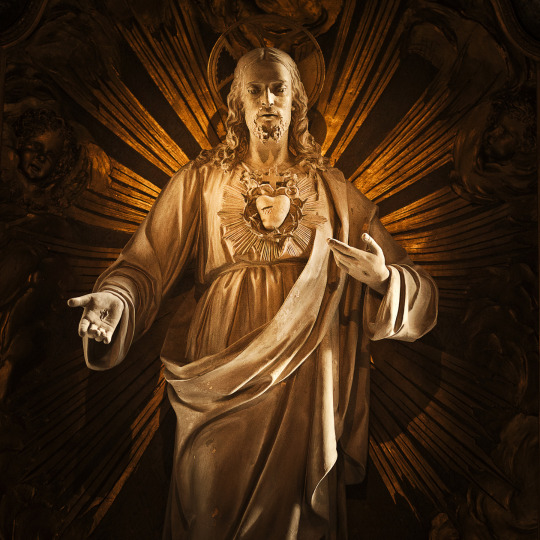
"The heart of Jesus is a refuge for sinners and a sanctuary for the suffering." - #SaintPadrePio #FirstDay
📷 Chapel of the Sacred Heart in the Basilica of Saint Ambrose, Milan, Italy / © THEPALMER / #GettyImages. #Catholic_Priest #CatholicPriestMedia
87 notes
·
View notes
Text

Sanctuary Basilica of the Assumption of Our Lady in Musta, Malta
French vintage postcard
#assumption#postkarte#lady#postal#sanctuary#sanctuary basilica#ansichtskarte#musta#french#tarjeta#ephemera#postcard#photography#carte postale#vintage#basilica#briefkaart#sepia#malta#photo#postkaart#historic
9 notes
·
View notes
Text

Templo y Santuario de Nuestra Señora del Rosario de Las Lajas en Ipiales, Nariño, COLOMBIA
#templo#temple#basilica#santuario#sanctuary#nuestra señora#our lady#ipiales#nariño#colombia#south america#sur america#america
43 notes
·
View notes
Text

Sanctuary of Las Lajas, Colombia: The Sanctuary of Las Lajas is a Catholic minor basilica located within the canyon of the Guáitara River in Ipiales, Nariño Department, Colombia. The Marian shrine is dedicated to the Blessed Virgin Mary as Our Lady of the Rosary. Wikipedia
415 notes
·
View notes
Text
Veronica’s Veil

At the Shrine of the Holy Face in Manoppello, Italy, visitors see a transparent cloth encased between two glass panes within an ornate silver frame above the sanctuary’s altar.
Once light is shined on the cloth of byssus fiber, the image of a bearded man, eyes open, and mouth seemingly taking a breath is revealed.
Devotees of Manoppello veil claim that it is the so-called “Veronica’s Veil.”
It was secretly moved to the little hilltop town in Abruzzo on orders from Pope Clement VII to protect it following the Sack of Rome in 1527.
Another image of Christ’s face, known as “Veronica’s Veil,” is displayed at St. Peter’s Basilica on the 5th Sunday of Lent each year to bless pilgrims as they approach Holy Week.
Although traditional Stations of Cross include “Veronica wipes face of Jesus,” none of the Gospels recount a woman wiping Jesus’ face as he carries his cross to Calvary.
A pious legend says Veronica later went to Rome to leave the relic with St. Clement, one of early popes.
German journalist Paul Badde is convinced that veil displayed by Vatican for the past 400 years is a copy and that the true veil is in Manoppello.
“Every year on Passion Sunday, they show a hoax, I would say,” Badde told Catholic News Service January 14.
Capuchin friars at Manoppello have been custodians of a veil since 1630.
For centuries, few people outside small town knew of cloth and its image of Jesus. However, Capuchin priest, Father Domenico di Cese, made it his life’s work to spread devotion to Holy Face of Manoppello.
When he first saw veil as a young priest in 1930s, he knelt in shock. The face on the ancient linen looked like the same unidentified man who had rescued him from rubble of a church after a major earthquake in 1915 when he was a child.
Father Cese died in 1978 and it wasn’t until 1999 that veil really caught world’s attention.
That was when Jesuit Father Heinrich Pfeiffer, an art historian at Rome’s Pontifical Gregorian University, announced at press conference that cloth was true “Veil of Veronica.”
He stated that after conducting research, he discovered that the image on the veil could be perfectly superimposed on face of the Shroud of Turin, the relic many believe is Jesus’ burial shroud.
Some devotees maintain that the image’s connection to “Veronica” is not related to a woman who tried to soothe Jesus but is actually form of phrase “vera icona” (true icon).
Capuchin Father Paolo Palombarini, parochial vicar of the shrine, said:
“Both pupils are open. But one can see that the right pupil is more closed than one on the left because this is first instance of the Resurrection and it happened just at it does when we wake up in the morning.”
Vatican does not formally recognize authenticity of relics like Veil of Manoppello or Shroud of Turin.
However, public veneration of such relics by popes often draw attention of faithful.
Such was the case when Pope Benedict XVI became first pope to visit Manoppello shrine in 2006 and venerate the image, Badde said.
He told CNS that Pope Benedict had read his book on the veil and “decided to go there against enormous resistance in Vatican.”
Still, during what Pope Benedict himself described as a “private pilgrimage,” he made no pronouncement about the image.
Addressing priests, religious and pilgrims who packed the shrine, he said those who seek the true face of Christ can find it in their brothers and sisters, “especially poorest and those most in need.”
“If we persevere in our quest for the face of the Lord,” Pope Benedict said, “at the end of our earthly pilgrimage, he, Jesus, will be our eternal joy, our reward and glory forever.”
Badde said, “He was the first pope after more than 400 years to get on his knees in front of this image, that’s what he did. That’s what will remain of his pontificate.”
Pope Benedict’s visit increased attention to the image, which continues to draw more pilgrims each year.
#Veronica’s Veil#Shrine of the Holy Face#Manoppello#Italy#transparent cloth#byssus fiber#Abruzzo#Pope Clement VII#St. Peter’s Basilica#holy week#pilgrims#devotees#stations of the cross#saint clement#vatican#Capuchin friars#Father Domenico di Cese#Pontifical Gregorian University#Father Heinrich Pfeiffer#shroud of turin#ancient relic#Veil of Manoppello#Pope Benedict XVI
5 notes
·
View notes
Text

Ancient Swan Iconography
October 10th 2024 (10/10 for the numerology lovers) just three days before my birthday was the first time I ever laid my eyes on swans in the flesh. These beautiful waterbirds known for their grace and beauty, as well as their aggressive temperament, were the perfect paradox for a Libra Sun + Mercury like myself. I felt such a deep connection to one of them in particular, I’d like to think we’re friends now. We shared some fig bar and they came closely to me. So in honor of my Solar Return, my Venusian Libra nature and my approaching opposing Martian Aries Saturn return, here is some archaeological evidence of swan iconography:

“Swan of Soli” (6th Century AD)
Swan (possibly goose; they weren’t distinguished between the two until much later) Mosaic at the St. Auxibus Basilica in the Ancient city of Soli, modern-day Northern Cyprus. There is an inscription in the mosaic set reading, “Christ! Mercy to those who have created this mosaic”. Cyprus was known for it’s rich copper mines. If the artistry and copper-filled lands weren’t enough to scream “Venusian!”, there is also the Temples at Cholades. Here, there are temples dedicated to the goddess Aphrodite herself as well as Isis (also a Venusian figure), Eros (also Venusian), Anatolian Goddess Cybele, Greco-Egyptian God Seraphis, Zoroastrian deity Mithras and more.

Aphrodite riding a Swan Terracotta Dish (4th Century BCE)
During the Archaic Greek period, sometimes Aphrodite was weaved in with swan symbolism. Good health, music, divination and grace all being associated with the majestic waterbird. Ovid and Horace have also referred to the Goddess on her chariot being drawn by swans into the air. It is believed to be found in Taranto, a coastal city in Southern Italy.

Aphrodite riding a Swan Pottery (5th Century BCE)
The Iron Age was a time when Cyprus had foreign influences from all over the Mediterranean. The sanctuary of Paphos was dedicated to the Goddess Aphrodite during this time. Homer and Hesiod even account for Aphrodite rising out of the sea from there. Vases like this one were called ‘lekythoi’ (“oil flasks”). The type of pottery is called “Athenian red-figure ware”. The piece is from Polis tis Khrysokhou while it was under Persian control, a town in Cyprus that was once known in Ancient times as Marion and Arsinoe.

“Swan Goddess” (Unknown-750 AD)
An Ivory statuette that was the side arm of a musical instrument, probably a 7-stringed kithara. It was found in Ephesus, an Ancient Greek city in Turkey. The style of the piece finds its closest relation to ivory pieces found on the site of the Temple of Artemis at Ephesus. Similarly in design, are also pieces found in Tumulua D excavation in Elmali to North of Antalya on the South coast of Turkey. While it is unsure which goddess is being depicted, it is speculated to be the Anatolian mother-goddess Cybele.
Sources:
“Swan of Soli”
https://www.academia.edu/1637307/_Papantoniou_G_2009_Revisiting_Soloi_Cholades_Ptolemaic_Power_Religion_and_Ideology_Cahier_du_Centre_d_Études_Chypriotes_39_271_87
https://www.visitncy.com/discover/soli-ruins/
“Terracotta Dish of Aphrodite riding Swan”
https://www.metmuseum.org/art/collection/search/248373
https://www.jstor.org/stable/43646721
“Pottery of Aphrodite riding Swan”
https://cyprus.ashmus.ox.ac.uk/AncCyp-Aph-07.html
“Swan Goddess”
https://artsandculture.google.com/asset/‘the-swan-goddess’-unknown/2gETPGGWVmYIeg?hl=en&avm=4
#archaeology#anthropology#ancient greek#ancient history#ancient culture#ancient greece#anatolia#cyprus#mythology and folklore#folklore#venusian#mythology#aphrodite#cybele#animal totem#swan symbolism#swan totem#astro observations#ancient rome
5 notes
·
View notes
Note
So re your tags on the pope post...
Where's the menorah krindor?
So, starting at the very beginning.
70 CE: Titus sacks Jerusalem and loots the Second Temple. In his triumph (fancy war parade) he has the Menorah, as is recorded by Josephus Flavius in 71 CE and by the Arch of Titus' reliefs in 81 CE
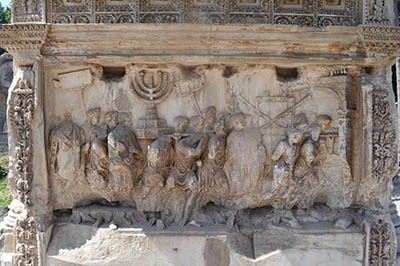
The Menorah is displayed in the Tempulum Pacis in Rome, and 2nd century CE Rabbis claim to have seen it in Rome, as well as various other artifacts from the desroyed temple including the parochet and the choshen.
Now here's the thing. This is the last time historical texts mention the Menorah by name so everything below here needs to be taken with an increasing pile of salt
410 CE: The Visigoths sack Rome. Procipius of Ceasarea (500-560), a Byzantine Historian, writes that the Visigoths take "treasures of Solomon the King of the Hebrews." If this includes the Menorah, the trail goes cold. So that's it right? The Menorah got taken to a secondary location and was lost forever, right?
Wrong, because that's not the only time Procipius mentions Jewish Temple loot.
425 CE: The Vandals sack Rome again, to the point where the word vandalize comes from it. Procipius notes that their leader, Geiseric, takes "a huge amount of imperial treasure" with him to Carthage, which was at that time the Vandal capital.
Trust me this is relevant
534 CE: The Byzantine Emperor Justinian sacks Carthage, and they hold a triumph in Constantinople. Among the paraded items are "treasures of the Jews, which Titus, the son of Vespasian, together with certain others, had brought to Rome after the capture of Jerusalem”
That these "treasures of the Jews" include the Menorah is not a new theory, as is indicated in the 19th century painting Geiseric sacking Rome by Karl Bryullov
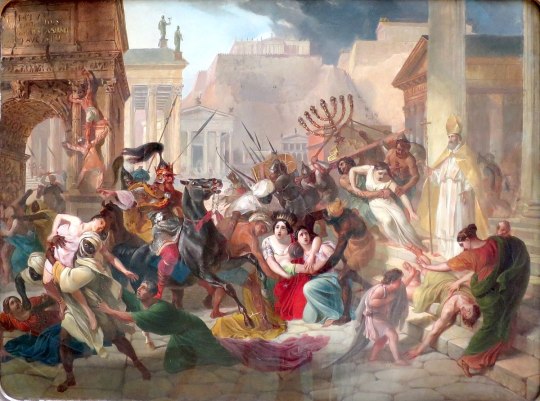
(Note the Menorah)
So it's in Istanbul right?
Wrong, because our boy Procipius isn't done yet: according to him, Justinian sent the "treasures of the Jews" to Christian sanctuaries in Jerusalem, since he heard that they were cursed that any city save Jerusalem that held them was doomed to be sacked.
This is the last time the "treasures of the Jews" are mentioned in historical texts.
So for our next step, lets look at major churches in Jerusalem in the 6th century, and officially enter the cork-board and string section of this rant post.
As well as the extant Church of the Holy Sepulcher, the Hagia Sion Basilica, and the Church of the Holy Apostles, Justinian built a church himself in the city, called the Nea, in 534 CE, just nine years after sacking Carthage. It would not be unreasonable that he'd send the Menorah to his own church, so we can theorize that it's in the Nea for the remainder of the 6th century (there are, of course, problems with relying on one historian's account of these things, but this is for fun, not a published article)
So that's it? It's in one of the churches of Jerusalem?
...
So in 614 CE Jerusalem gets sacked by the Sasanian/Persian Empire, who according to historical records destroy all the churches.
Now here's the thing. Recent archaeological evidence gives rise to the possibility that our Byzantine historical sources are trying to stir up outrage against the Sasanians: While mass graves dating to around 614 CE were found, the churches and Christian residential neighborhoods were barely, if at all, damaged, and the Nea itself was very possibly completely undamaged. This is, however, a recent theory, and the academics are still hashing it out.
So it may be in one of the churches of Jerusalem?
Tragically, even if the 614 siege didn't get the churches, in 1009 the Fatimid Caliph al-Hakim bi-Amr Allah destroyed all churches, synagogues, and many religious artifacts of both Christians and Jews in Jerusalem. So if by some miracle the Menorah had survived until this point, if it was in Jerusalem it was most likely destroyed.
But that's disappointing, and what's a good conspiracy theory without going a step or two beyond what is reasonable?
Apparently, while the churches, synagogues and most of the artifacts were destroyed, at least in the case of the Church of the Holy Sepulcher, objects that could be carried away were looted, rather than destroyed. And if we know anything about the Menorah at this point, that thing is certainly able to be carried away by people.
If the Menorah was looted rather than destroyed, it's not unreasonable that it would have made it's way to the Fatimid capital of Cairo. However, as the historical record dried up some 500 years beforehand, beyond this point it's unreasonable to attempt to track the Menorah.
So that's it. If the Menorah wasn't destroyed it most likely made its way to Egypt and was lost or destroyed there.
Is what I'd say if I wasn't so far down this rabbit hole I was beyond reason. Because as we all know there's one place that has all the significant treasures of Cairo and a penchant for looting:
The British Museum
#i cant in good conscience call this either archaeology or history#anyway this is very unhinged but was fun to research#pseudoarchaeology#pseudohistory#jewish stuff
14 notes
·
View notes
Text

9th November >> Fr. Martin's Reflections/Homilies on Today's Mass Readings for The Feast of the Dedication of the Lateran Basilica (Inc. John 2:13-22): ‘He was speaking of the sanctuary that was his body’.
Dedication of the Lateran Basilica
Gospel (Except USA) John 2:13-22 Destroy this sanctuary and in three days I will raise it up.
Just before the Jewish Passover Jesus went up to Jerusalem, and in the Temple he found people selling cattle and sheep and pigeons, and the money changers sitting at their counters there. Making a whip out of some cord, he drove them all out of the Temple, cattle and sheep as well, scattered the money changers’ coins, knocked their tables over and said to the pigeon-sellers, ‘Take all this out of here and stop turning my Father’s house into a market.’ Then his disciples remembered the words of scripture: Zeal for your house will devour me. The Jews intervened and said, ‘What sign can you show us to justify what you have done?’ Jesus answered, ‘Destroy this sanctuary, and in three days I will raise it up.’ The Jews replied, ‘It has taken forty-six years to build this sanctuary: are you going to raise it up in three days?’ But he was speaking of the sanctuary that was his body, and when Jesus rose from the dead, his disciples remembered that he had said this, and they believed the scripture and the words he had said.
Gospel (USA) John 2:13-22 Jesus was speaking about the temple of his Body.
Since the Passover of the Jews was near, Jesus went up to Jerusalem. He found in the temple area those who sold oxen, sheep, and doves, as well as the money-changers seated there. He made a whip out of cords and drove them all out of the temple area, with the sheep and oxen, and spilled the coins of the money-changers and overturned their tables, and to those who sold doves he said, “Take these out of here, and stop making my Father’s house a marketplace.” His disciples recalled the words of Scripture, Zeal for your house will consume me. At this the Jews answered and said to him, “What sign can you show us for doing this?” Jesus answered and said to them, “Destroy this temple and in three days I will raise it up.” The Jews said, “This temple has been under construction for forty-six years, and you will raise it up in three days?” But he was speaking about the temple of his Body. Therefore, when he was raised from the dead, his disciples remembered that he had said this, and they came to believe the Scripture and the word Jesus had spoken.
Reflections (8)
(i) Feast of the Dedication of the Lateran Basilica
The Basilica of Saint John Lateran in Rome is the Cathedral church of the Pope in his role as Bishop of the Diocese of Rome. It is called ‘Saint John’ after the two monasteries once attached, dedicated to Saint John the apostle and Saint John the Baptist. As the Cathedral Church of the Pope it has the title ‘Mother and Head of all the churches of the City and of the World’. It is sometimes called the Lateran Basilica or the Basilica of Saint John Lateran; the ‘Laterani’ were an old Roman family who probably once owned the land on which the Emperor Constantine, the first Christian Emperor, built this Basilica. It is one of the most important religious buildings in the Catholic Church. The most important religious building in the time of Jesus and the early church was the Jewish Temple in Jerusalem. In the words of today’s responsorial psalm, it was ‘the holy place where the Most High dwells’. At a time when this Temple was still standing in all its glory, Paul makes the extraordinary statement in today’s second reading, ‘Don’t you realize that you are God’s Temple and that the Spirit of God is living among you?’ Paul is declaring that the Most High now dwells in the community of believers who gather around the risen Lord. The focal point of God’s presence is no longer a building, no matter how magnificent, but the community of those who have responded in faith to the preaching of the gospel. Paul declares that the foundation of this building is the one he has laid, namely, Jesus Christ. A little later in this letter, Paul declares that each individual member of the church is a temple of the Holy Spirit, in virtue of baptism. In today’s gospel reading from John, which was written perhaps thirty years after the Jewish Temple was destroyed by the Romans, Jesus speaks of himself as the temple of God, the focal point of God’s presence. The Word who was God became flesh in Jesus; to see Jesus is to see God the Father. The risen Lord is the primary temple of God and the church can only be God’s temple if the risen Lord remains its foundation. As members of the church, we can reveal God’s presence to our world to the extent that we allow his Son, our risen Lord, to live out his life of love in and through us.
And/Or
(ii) Feast of the Dedication of the Lateran Basilica
The Lateran Basilica is one of the four great Basilicas of Rome. The original Basilica was erected by the Emperor Constantine, the first Christian Emperor. It is the Cathedral church of Rome and, so, is the church of the Bishop of Rome, the Pope. For that reason, it has come to be known as the mother church of Christendom. Before the time of Constantine there were no public buildings called churches. Christians met in ordinary spaces, such as people’s homes. Writing to the church in Corinth about thirty years after the death and resurrection of Jesus, Paul says to them, in the words of today’s first reading, ‘You are God’s building… God’s temple’. For Paul, it was the Christian community, rather than any physical building, that was the place of God’s presence in the world. In the gospel reading, Jesus points to himself as the Temple of God. He, more than any human being, is the place of God’s presence in the world. As individuals and as a community we look to the Lord to help us to be the place of God’s presence in the world, to be church, in that sense. We gather in a building we call a church, to open ourselves to the presence of the Lord, so that we can become more fully the church of God, the body of Christ, in our world.
And/Or
(iii) Feast of the Dedication of the Lateran Basilica
In the early fourth century the first Christian emperor, Constantine, had a church built on land that once belonged to the Laterani family. That church of Constantine was the precursor of the present Basilica. This Basilica is now the Cathedral of the Diocese of Rome. It is the church of the Pope in his capacity as Bishop of Rome. For that reason, it has the title, ‘mother and head of all the churches of the city and the world’. Our local parish churches are much more modest building that the Basilica of Saint John Lateran in Rome, and, yet, both are equally monuments to people’s faith. In today’s first reading Paul tells the Christians in Corinth, ‘you are God’s building… you are God’s temple’. Paul is reminding us that more fundamental than the building we call church are the people we call church. The church building is there to help us to express our identity as a people of faith, called to worship God through Christ in the Spirit. If our worship is to be authentic, the shape of our worship must become the shape of our lives. Our whole lives are to be a movement towards God, through Christ and in the Spirit. This is what it means to be church, to be the temple of God in the world, the living sign of God’s presence. In the gospel reading Jesus points to himself as the temple of God in the world, the one through whom God is present in the world. This is the heart of our own baptismal calling, to become temples of God through whom God’s loving presence touches the lives of others.
And/Or
(iv) Feast of the Dedication of Basilica of Saint John Lateran
In the early fourth century the first Christian emperor, Constantine, had a church built on land that once belonged to the Laterani family. That church of Constantine was the precursor of the present Basilica. This Basilica is now the Cathedral church of the Diocese of Rome. It is the church of the Pope in his capacity as Bishop of Rome. For that reason, it has the title, ‘mother and head of all the churches of the world’. Every church building tells a story about the faith community who gather in the building. In that sense today’s feast is less about a church building and more about the people we call church. Paul’s words to the Corinthians this morning are addressed to every parish community: ‘You are God’s building’. For Paul, the local faith community is the Temple of God, where God’s Spirit is dwelling. The local parish church is most itself when it is filled with the people who are the church, the baptized and believing community. Paul in that second reading reminds us that the foundation of the believing community is Jesus Christ. As individual believers and as a community of faith we are called to build our lives on the person of Jesus, by keeping his words and by remaining open to his Spirit. That is our shared baptismal calling. In attending to that calling we give meaning to the building in which we gather.
And/Or
(v) Feast of the Dedication of the Lateran Basilica
The Lateran Basilica is one of the four great Basilicas of Rome. The original Basilica was erected by the Emperor Constantine, the first Christian Emperor. It is the Cathedral Church of Rome and, so, is the church of the Bishop of Rome, the Pope. For that reason, it has come to be known as the mother church of Christendom. Before the time of Constantine there were no public buildings called churches. Christians met in ordinary spaces, such as people’s homes. Writing to the church in Corinth about thirty years after the death and resurrection of Jesus, Paul says to them, in the words of today’s first reading, ‘You are God’s building… God’s temple’. For Paul, it was the Christian community, rather than any physical building, that was the place of God’s presence in the world. In the gospel reading, Jesus points to himself as the Temple of God. He, more than any human being, is the place of God’s presence in the world. As individuals and as a community we look to the Lord to help us to be the place of God’s presence in the world, to be church, in that sense. We gather in a building we call a church, to open ourselves to the presence of the Lord, so that we can become more fully the church of God, the body of Christ, in our world. Even when we cannot gather in a building called a church, we remain what the first letter of Peter calls ‘living stones’ in a ‘spiritual house’ whose cornerstone is the Lord.
And/Or
(vi) Feast of the Dedication of the Lateran Basilica
Today’s church celebrates the Cathedral church of the Diocese of Rome. It is one of the four major Basilicas in Rome and as the Cathedral church of the Diocese it has a special association with the Pope in his role as Bishop of Rome. It is as Bishop of Rome that he is Pope of the Universal Church. It is a beautiful building the origins of which go back to the first Christian Emperor Constantine. Today’s second reading is from Paul’s first letter to the Corinthians. At the time Paul wrote that letter there were no Christian churches, big or small. The Christian community gathered wherever it could, sometimes in the home of one of its members. In that reading Paul says to the community of faith in Corinth, ‘you are God’s building’. ‘You are God’s temple and the Spirit of God is living among you’. In the gospel reading for today’s feast, Jesus points to himself as the sanctuary or the Temple of God. He is the one in and through whom God is present in a special way. Paul reminds the local church in Corinth that they are now the Temple of God, in and through whom God is present in the world in a special way. Rather than a focus on a building, Paul puts the focus on the community. As a faith community we come to this building which we call a church. Yet, more fundamentally, we are the church, all of us, and the Lord wants to be present in the world in and through us as a community of faith. We are called to live in a way that reflects that wonderful identity in which we all share.
And/Or
(vii) Feast of the Dedication of the Lateran Basilica
We don’t often celebrate the feast of the dedication of a church. However, the basilica of Saint John Lateran is a special church. It is the cathedral church of the Diocese of Rome. Like any diocesan cathedral, it is the church of the bishop of Rome, who, of course, is the Pope. The Basilica is the church of the Pope in his role as Bishop of Rome. For this reason, this particular church has been given a rather long title, ‘Mother and Head of all the churches of the city and of the world’. Why is it sometimes called the Lateran Basilica or the Basilica of Saint John Lateran? The ‘Laterani’ were an old Roman family who probably once owned the land on which Emperor Constantine, the first Christian Emperor, built this Basilica in the early decades of the fourth century. The present Basilica retains the plan given to it by the Constantine but it has been rebuilt and restored over the centuries, and its interior was transformed in the mid-17th century by the famous sculpturer Borromini. If you happen to be in Rome, it is a Basilica well worth visiting. Of the three readings for this feast, only the first reading focuses on an actual building, the Temple in the city of Jerusalem, understood as the place of God’s living presence in the world. In the gospel reading, even though Jesus is present in the Temple in Jerusalem, he places the focus not on the building but on himself, Speaking of himself, he says, ‘Destroy this sanctuary (this temple) and in three days I will raise it up’. Jesus is saying that he is the place where God is truly present in the world, not some building, no matter how sacred. When Paul was writing to the church in Corinth in today’s second reading, there were no Christian buildings in existence. Paul’s focus in that reading is not on any building but on the community of faith, the church. He says to them, ‘You are God’s building…you are God’s Temple’. Paul is saying that the Christian community, the body of Christ, is the place where God is to be truly present in the world. The church is a spiritual temple. Later on in that same letter, Paul addresses each individual member of the church as a temple of the Spirit. If Jesus was the supreme expression of God’s presence in the world, we are each called in our own way to be living expressions of God’s loving presence in our world today. The Lord, now risen, continues to be God’s presence in the world today through each one of us in all our rich diversity.
And/Or
(viii) Feast of the Dedication of the Lateran Basilica
The church of Saint John Lateran in Rome is one of the four great Basilicas of the city, the other three being Saint Peter’s Basilica, Saint Mary Major’s Basilica and the Basilica of Saint Paul outside the Walls. It is the Cathedral church of the Pope in his role as Bishop of the Diocese of Rome. It is called ‘Saint John’ after the two monasteries once attached, dedicated to Saint John the apostle and Saint John the Baptist. As the Cathedral Church of the Pope it has the title ‘Mother and Head of all the churches of the City and of the World’. There are many wonderful churches in Rome and throughout the world. Yet, we are all very aware that the church is not primarily a building, no matter how grand. The church is the community of believers who gather in the building we call a church. That is why at the beginning of today’s first reading, St Paul says to the community of believers in Corinth, ‘you are God’s building’. The most impressive physical building of worship among Jews in Paul’s time was the Temple in Jerusalem. Yet, in that same reading, Paul says to the church in Corinth, ‘you are God’s Temple’. Interestingly, in the gospel reading, Jesus, while standing in the magnificent Temple in Jerusalem, identifies himself as the Temple or sanctuary of God, ‘Destroy this sanctuary and in three days I will raise it up’. Jesus was claiming that the place where God dwells among humanity was no longer the physical Temple in Jerusalem but himself. Paul reminds us that we, the community of faith, the members of Christ’s body, are now the place where God wishes to dwell among humanity. As living stones in God’s building, God’s Temple, each one of us is called to reveal God’s loving presence to others. One of the reasons we gather in a building like this, a church, is to receive the grace and strength we need to be true to our calling to be living stones in God’s spiritual building. The Lord needs us to make tangible his loving and merciful presence in our world today.
Fr. Martin Hogan.
4 notes
·
View notes